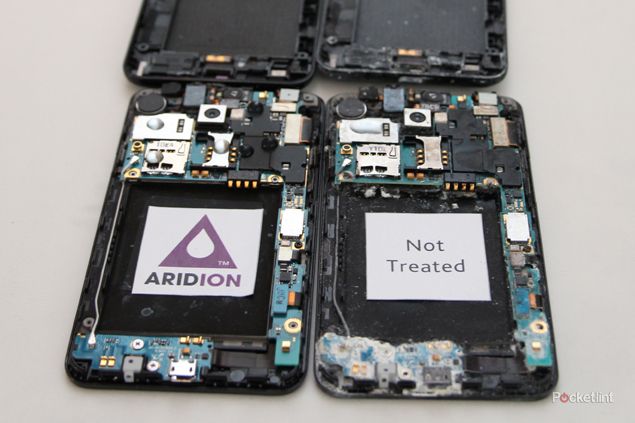Those paying attention in class will know that one of the features Motorola has added to both the Motorola RAZR and Xoom 2 devices is SplashGuard, a technology that will provide protection from water damage at the molecular level. Neat stuff.
The company behind SplashGuard is P2i, a UK-based firm founded in 2004 by Dr Stephen Coulson, now chief technical officer. We caught up with Dr Coulson at the IFA Global Press Conference, in Dubrovnik, Croatia. And it seems that Motorola won't be the only manufacturer to employ the technology.
"We're working with the top 10 to 15 manufacturers", Coulson tells us, but remains tight-lipped as to exactly who those manufacturers are. "We should start seeing more devices before the end of 2012," he confirms, before explaining the difficulties in being specific.
"Each company has a check list of items to run though: Does it affect the battery? Will it affect the screen? Then there is the marketing value of providing this protection on devices.
"But what we've done is proven that this is a cost-effective industrial process," he adds, explaining that P2i's Aridion coating is behind what Motorola are calling SplashGuard.

However, there is a big difference between protection at the nano-level and traditional waterproofing to achieve an IP rating. "You can block water entry with o-rings or plugs, but if you leave that plug out on one occasion, you don't have any protection," explains Coulson.
But that's not to say that Aridion is a replacement for this type of protection. The application of Aridion is designed to provide protection against the sort of accidental exposure that devices experience: dropping your phone in the toilet, or the glass of wine that gets knocked over by a gregarious reveller.
There are several ways that water damages devices, from shorting out electronics to corroding components. P2i's application technique means that rather than blocking the water from the casing, it's all the surfaces within that are protected.
It also means that device design doesn't have to be sacrificed in the process. The result is that you can have a lifeproof phone without a bulky casing.
"The secret lies in the chemistry and the application," says Coulson. One of the great things about P2i's approach is that it is easily integrated into the manufacturing process.
The company supplies the nano-coating chambers, into which whole devices can be placed on racks. The process then uses a vapour to coat all the exposed surfaces of the device.
"This layer lowers the surface energy of the product so that when liquids come into contact with it, they remain attracted to their own molecules, rather than being attracted to the surface of the device," he tells us.

The system provides for plenty of scalability and, because of the process, can be used on any device you like - phones, tablets, cameras, laptops.
In fact, electronics aren't the only products to benefit from protection from P2i: the Ministry of Defence originally adopted the tech to protect military clothing and it has found its way into the likes of Timberland and Nike footwear.
So, as P2i's Aridion starts its journey to be in our devices, your next phone might be significantly better protected against accidental water damage than your last.
Is P2i's technology going to improve your phone experience? Have you dropped a handset down a toilet? Let us know in the comments below...

